Tuscany is one of the most visited regions in Italy, yet many people visit and are surprised by authentic Tuscany food. It is easy to go to Italy thinking you will enjoy a large plate of pasta and meatballs or fettuccine alfredo, but these dishes are not even classic Italian food! To really get a taste of the region, dive into genuine Italian cuisine and experience all the diverse food you can’t easily find in the States.
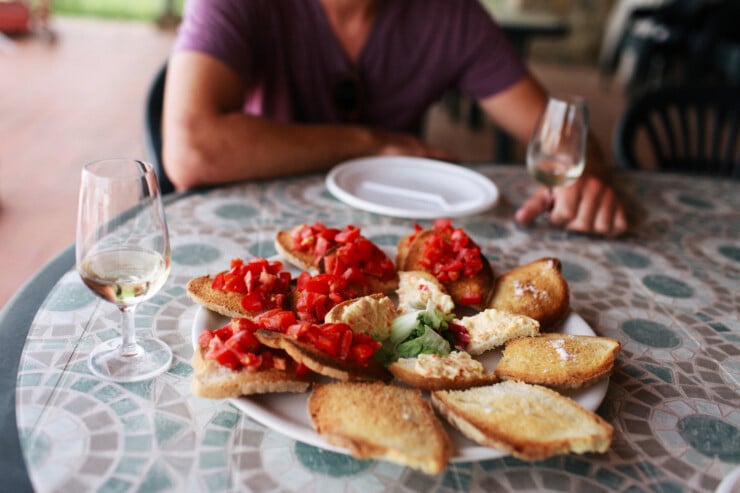
What Is Tuscany Food Like?
Tuscan food is very much influenced by Tuscany’s location in central Italy, with many ingredients from the land (though there are some classic seafood dishes, too)! While you will find traditional Italian ingredients like tomatoes, basil, rosemary, garlic, and olive oil, that is just the tip of the iceberg.
Traditional Tuscan food is often described as “cucina povera” or the poor kitchen because they use simple ingredients in limited quantities. Most traditional Tuscan recipes have five ingredients or less and are heavily based on Tuscan cooking pantry staples. We’re talking basic ingredients like beans, olive oil, unsalted Tuscan bread, sheep’s milk cheese, wild game, and various cured meats.
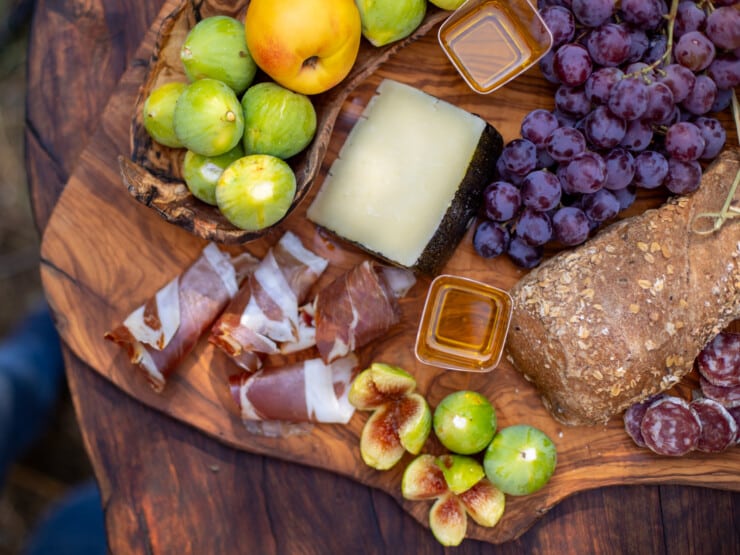
Why You Should Trust Us
Don’t let the name fool you, though — just because the ingredients are simple doesn’t mean the dish is bland. Tuscany is known around Italy for its fantastic food, and part of that is based on the idea of quality over quantity. Something as simple as cannellini beans in extra virgin olive oil and garlic is somehow a 5-star delicacy when the main ingredients are fresh and delicious.
Different areas of Tuscany have signature dishes that vary throughout the Tuscan countryside. These include Pecorino di Pienza cheese from Pienza, pici pasta from the Siena area, and Chianina beef, which is used for the famous Florentine steak known as bistecca Fiorentina.
When traveling in Tuscany, you’ll quickly realize what each town, city, or area is known for, so be sure to try those dishes when you’re in the area. Below, we’ve compiled some of our favorites to look for on your trip to Italy.
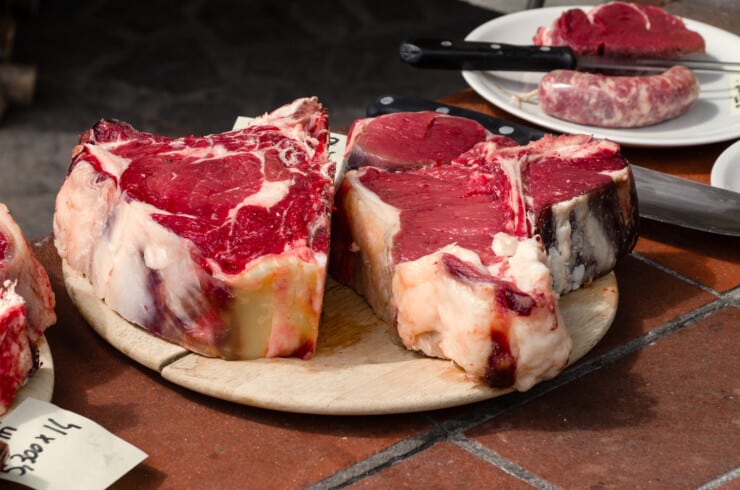
14 Classic Tuscany Food Dishes
Follow my lead to taste the best of Tuscan cuisine. I lived in Tuscany for 12 years and married a true Tuscan, so you can trust me to know what’s legit. These are some of my (and his) absolute favorite typical Tuscan dishes that we eat non-stop. To make it easy on you, I’ve included some recipes and some of my favorite local spots, so read on for my best Tuscan food recommendations.
Bistecca alla Fiorentina
This meal is not to be missed. Bistecca alla Fiorentina is a grilled T-bone steak made with meat coming from Tuscany’s Val di Chiana. First, it will be presented to you raw (so you can evaluate the freshness, fat-to-muscle ratio, and, most importantly, size), and then they will flash grill it. Warning: I say flash grill for a reason: this steak is served rare.
If you don’t like your meat bloody, you likely won’t find an Italian willing to “ruin” the meat by cooking it more for you. However, you can stick to eating the end pieces, which are slightly more cooked. A great bistecca is thick, juicy, and, most importantly, comes from the Chianina cow. Chianina beef is local to Tuscany and, therefore, fresher and more authentic to the traditional cuisine.
Another steak worth ordering is the Tagliata di Manzo, grilled, sliced steak, usually served over arugula. We’ve shared five must-try spots for the best steak in Florence.
Cacciucco
Cacciucco is a seafood stew that is perfect for fish lovers. This dish comes from the port city of Livorno and was created for fishermen to use the smaller fish that didn’t sell well at the market. It has a red wine base and often contains squid, octopus, small white fish, mussels, clams, and shrimp.
It’s then topped with toasted bread rubbed with garlic and oil. The bread, being crunchy (and sometimes actually stale), is used to soak up the delicious, flavorful stew, not to waste even a single drop.
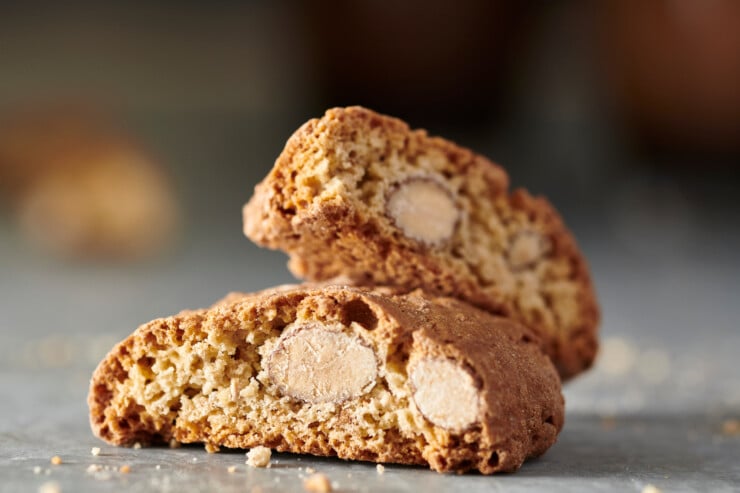
Cantucci
Also known as the “biscotti di Prato” or cookies from Prato, these crunchy almond cookies are similar to the biscotti we know in the US. However, in Italy, they are just better. Made with just flour, eggs, sugar, and almonds, the cookies are “twice-baked” – once as a cookie “loaf” and then again after slicing.
These cookies originated in Prato in the 14th century and have been made around Italy ever since. Prato is my husband’s hometown, so we take these cookies seriously and always have some for us or guests. They are often served after a meal with a small glass of Vin Santo — holy wine — a sweet golden wine. It’s customary to dip the cookies into the wine to soften them as you eat them.
A classic shop for cantucci is at the Biscottificio Antonio Mattei. Here, you can see the production of the cookies, as well as try different unique flavors and receive a beautiful gift box to take with you if you’re on your way to a dinner party or to enjoy at home.
Castagnaccio
Chestnuts are a staple in Tuscany, and they grow throughout the region, especially in the north in the Mugello area. Therefore, it makes sense that the Tuscans would have found a way to preserve them and utilize them later. They achieve this by drying them (often using smoke) and grinding them into a fine flour. This chestnut flour lasts approximately a year and can be used to make castagnaccio, a type of “cake” made without traditional flour, milk, or eggs.
The traditional recipe calls for chestnut flour, water, oil, and sometimes raisins, nuts, or pine nuts, along with rosemary. It’s a simple peasant dish found in bakeries around Tuscany in the fall season. My husband’s family has a chestnut grove, so they collect, dry (in a vast smokehouse), and grind their own, making the best chestnut flour I’ve ever tasted. While I can’t share their family’s castagnaccio recipe, this one is similar and delicious.
Cecina
Speaking of cakes that aren’t cakes, you must try the flavorful cecina, also known as torta di ceci. This gluten-free dish is made with chickpea flour, water, olive oil, salt, and black pepper. It’s then baked and eaten as a snack or even a light lunch.
The consistency is somewhat similar to an omelet, but it’s vegan. I love it in the summer on the beach for a leisurely, quick lunch. You can find it in pizza shops and bakeries, and it’s served year-round.
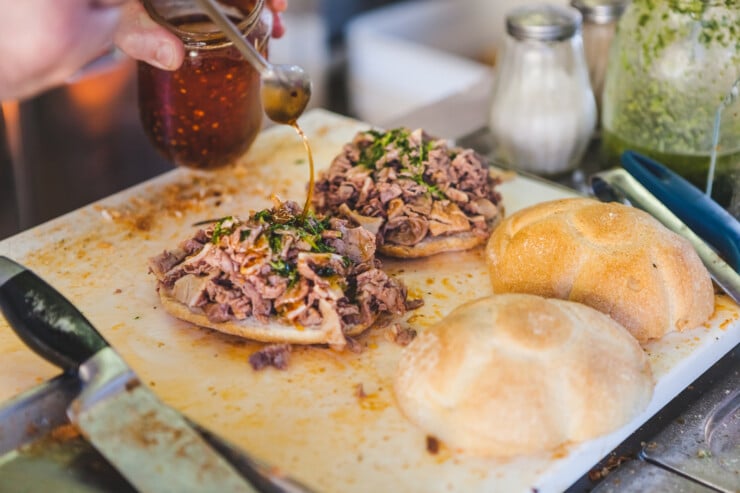
Crostini al Fegato
A classic appetizer, crostini are small pieces of bread served with various toppings. One of the most well-known in Tuscany is topped with “fegato” or chicken liver. The liver is spiced, well-cooked, seasoned with anchovy paste, and served hot.
It can seem unappealing if you’re not a fan of liver, but the spices and cooking methods help mellow the flavor of the liver. It’s worth a try at least once! You can find it in the appetizer section on an Italian menu (“antipasti“) by looking for “crostini” or “crostini toscani.“
Fagioli all’uccelletto
Did you know that the people of Tuscany are nicknamed “mangiafagioli,” or bean eaters? Beans comprise a considerable part of their diet, and this dish is no exception. This bean dish is the Italian equivalent of baked beans in the US. It’s a side dish that pairs well with red meat and chicken, and is the ultimate comfort food.
Made with cannellini beans, sage, tomato sauce, and olive oil, it’s a vegan and straightforward dish, perfect for a cold day. You can find it in the “contorni” section of a menu, especially in places that serve grilled meats, or you can make it at home using this recipe.
Lampredotto
It’s an innocent-sounding name, but this dish is the fourth stomach of a cow. OK, I know, you might be thinking, “Ummm, I am NOT eating cow stomach!” But hear me out! This dish is boiled, seasoned, oh-so-tender, and served on a bun. It’s the original street food of Florence, served from carts or stands scattered throughout the city. If you can get past the fact that it’s stomach, I promise you are in for a real treat.
Don’t miss the salsa verde or green herby sauce they add on top. My favorite is in the Sant’Ambrogio neighborhood of Florence at Sergio Pollini Lampredotto.
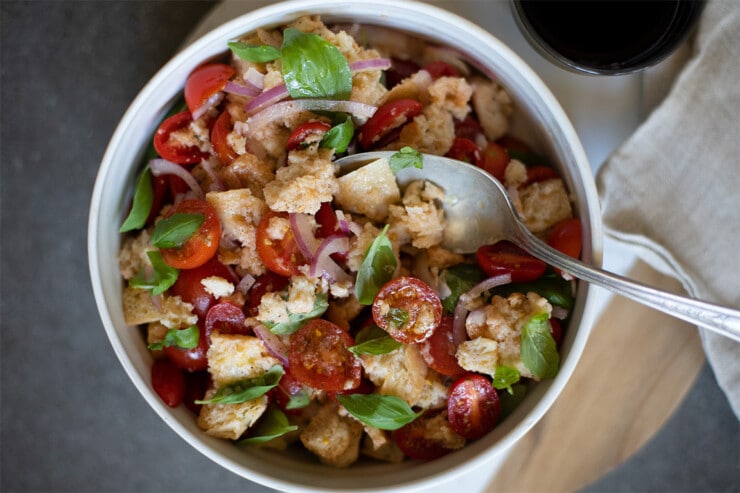
Pappa al Pomodoro
Italians love to reuse stale bread, and this is another example of bread getting a second life. Pappa al Pomodoro originated in Siena sometime after tomatoes became widely eaten in Italy. Pappa in Italian means “mush” or “baby food.” This dish has a very oatmeal-like consistency. It is made with fresh tomatoes, garlic, basil, and a generous amount of olive oil.
The tomato is cooked into a pulp, with its skin removed, and then mixed with stale bread until it forms a mush. It is usually served warm and is best around September when the tomatoes are at their most flavorful. Try your hand at making this Pappa al Pomodoro pasta for an elegant twist!
Panzanella
Panzanella is another vegetarian dish, but this time, it is adapted for the summer. It is a salad made from stale bread, soaked in water and vinegar, then mixed with veggies like tomatoes, cucumber, red onion, basil, and sometimes, capers.
The origins of this dish date back to at least the 1300s and were popular among peasants who didn’t want to waste day-old bread. Nothing says summer in Tuscany like a heaping bowl of fresh, cold Panzanella with a crisp glass of local white wine.
Peposo
This dish is a stew made with beef and reduced red wine. The sauce almost resembles tomato sauce, but when peposo was invented, tomatoes were still considered poisonous (a fun fact: tomatoes didn’t become a dietary staple in Italy until the 1500s).
Today, you may sometimes find peposo served with tomatoes, onions, and other vegetables, but the authentic, original recipe is typically served without these additions. It’s best served hot, accompanied by a glass of Chianti Classico.
An interesting fact about this savory dish is that Brunelleschi, the architect of the famous dome of the Florence Cathedral, fed his workers peposo every day. It was hearty, full of vitamins, warming in the winter, and provided the fuel to continue building the now-famous icon we will still admire today.
Frequently Asked Questions
Classic Tuscan dishes include Crostini Toscani, Panzanella, Bistecca alla Fiorentina, Ribollita, and Pappa al Pomodoro. These dishes reflect the region's rich culinary tradition, emphasizing fresh, local ingredients and simple preparation methods.
Tuscan cuisine is known for its simplicity, relying on the quality of the ingredients rather than complicated recipes. It often features unsalted bread, high-quality olive oil, fresh vegetables, and local meats. The region's culinary tradition is deeply rooted in its agricultural heritage.
Yes, many Tuscan dishes are suitable for vegetarians. Dishes like Panzanella (bread salad), Pappa al Pomodoro (tomato and bread soup), and Ribollita (vegetable and bread soup) are all vegetarian-friendly and showcase the region's fresh produce.
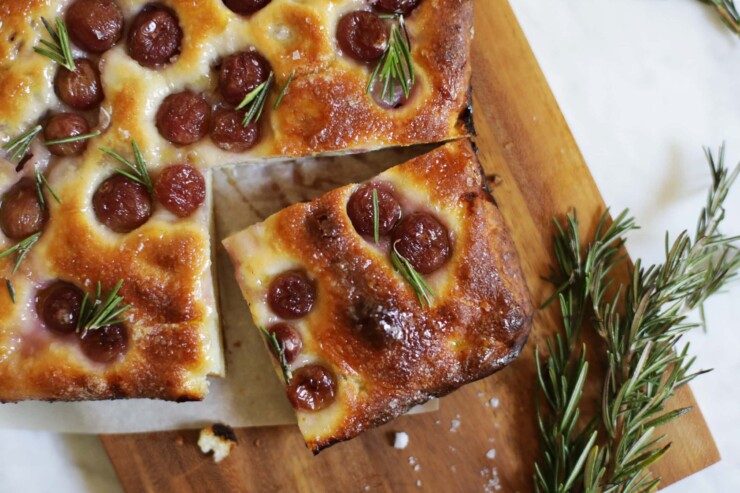
Pici
OK, I know I said to move away from the pasta, but this is one pasta dish worth trying while in Tuscany. Pici comes from the southern part of the region and is a kind of fat, handmade spaghetti. For an even more authentic experience, try it with a sauce made from wild boar (ragù di cinghiale), as this is one of the most traditional ways to enjoy pici.
Fun fact: It’s called “pinci” in some regions of Tuscany (in and around Montalcino) and often made with a garlicky sauce called “aglione.” I love this dish with a glass of Brunello di Montalcino at Il Moro in Montalcino!
Ribollita
Vegetarians rejoice—this dish is for you! Ribollita is a bread soup full of veggies and carbs, drizzled with a hearty dose of olive oil. A must-try for the winter months if you find yourself freezing in Tuscany; this will warm and keep you full for hours.
Schiacciata
Schiacciata means “crushed” in Italian, and there are two popular foods with this name. Schiacciata alla Fiorentina is a dessert traditionally made around Carnival time, rich in eggs and sometimes stuffed with cream. You will likely see it in the bakery presented as a large sheet cake, with the symbol of Florence, the Giglio, outlined on top in powdered sugar.
Another popular schiacciata is a flatbread coated in olive oil and salt, which has been made in Tuscany since the 1500s. This is great bread for ordering a “panino” or sandwich. It’s thin, tender, oily, and delicious! And, during harvest time, you’ll encounter a version with grapes known as schiacciatta all’uva (pictured above).
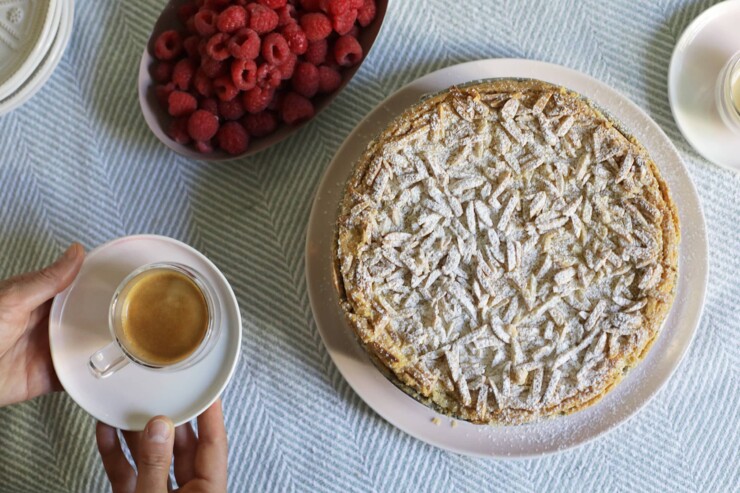
Torta della Nonna
A famous dessert all over Italy, Torta della Nonna is a shortbread crust filled with custard or sweetened ricotta cheese and topped with almonds or pine nuts.
It was first created in the mid-1900s, not by a nonna (or grandmother), but by a chef, Guido Samorini, who was criticized for his paltry selection of desserts on his menu. He set out to create a new dessert, and this cake was born! Now you can find it all over Italy, sometimes including variations such as chocolate.
Get A Personalized Travel Itinerary
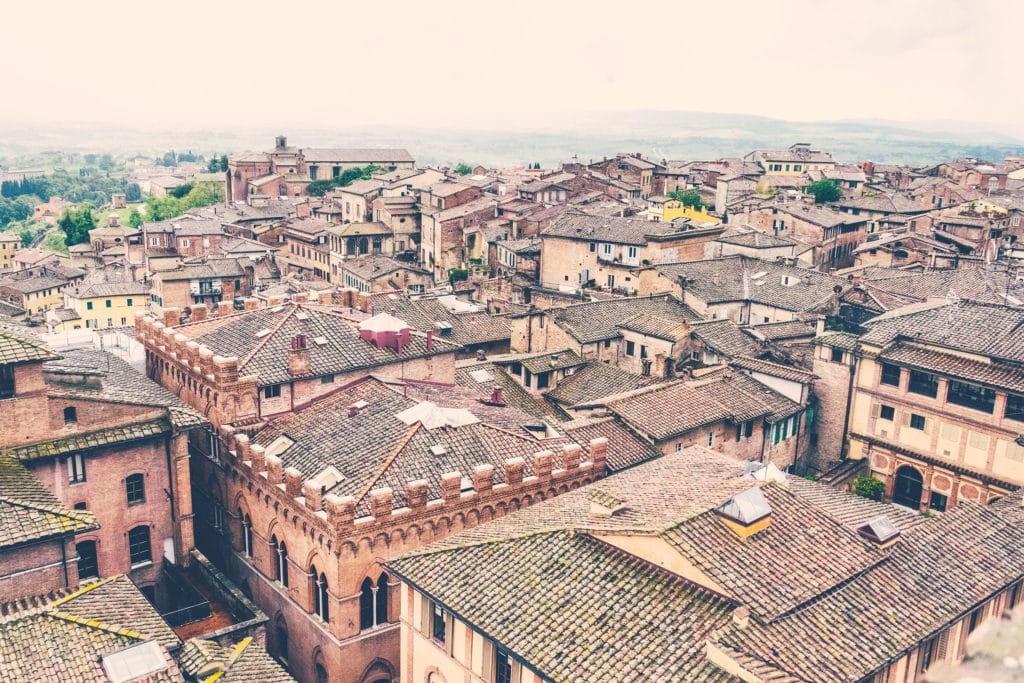
Classic Day Trips From Florence
Want to head out to try these classic Tuscan dishes for yourself? Look at these six classic day trips from Florence to dive into this beloved Italian region.
Head to areas such as the small town of San Gimignano, the walled city of Lucca, and the Tuscan beaches, including Viareggio and Forte dei Marmi. You can eat these dishes in their hometowns, and additional dishes we didn’t mention here, like the handmade pasta from Lucca called Tordelli Lucchesi.

Classic Tuscan Recipes
Want to cook some local food at home before you head to Tuscany? Here are some classic dishes from Tuscany our readers love:

Tuscany Travel Guide
Are you considering traveling to Florence and the Tuscany region in real life? Check out our free Tuscany Travel Guide for our best travel tips, recipes, and articles on Italy.
Have Us Plan Your Italy Trip
Did you know we’re also a boutique travel agency specializing in Italian travel planning? If you’re looking to plan one of the best trips to Italy, our Italy trip planner services are here to help you plan your perfect itinerary.
Photo Credit: Bruschetta in Tuscany By Kayla Snell; Bistecca by ellepistock; Almond Biscotti By Jeff Wasserman; Lampredotto Sandwich, Typical Florentine Street Food By Giorgio Magini; all other photos by Salt & Wind Travel